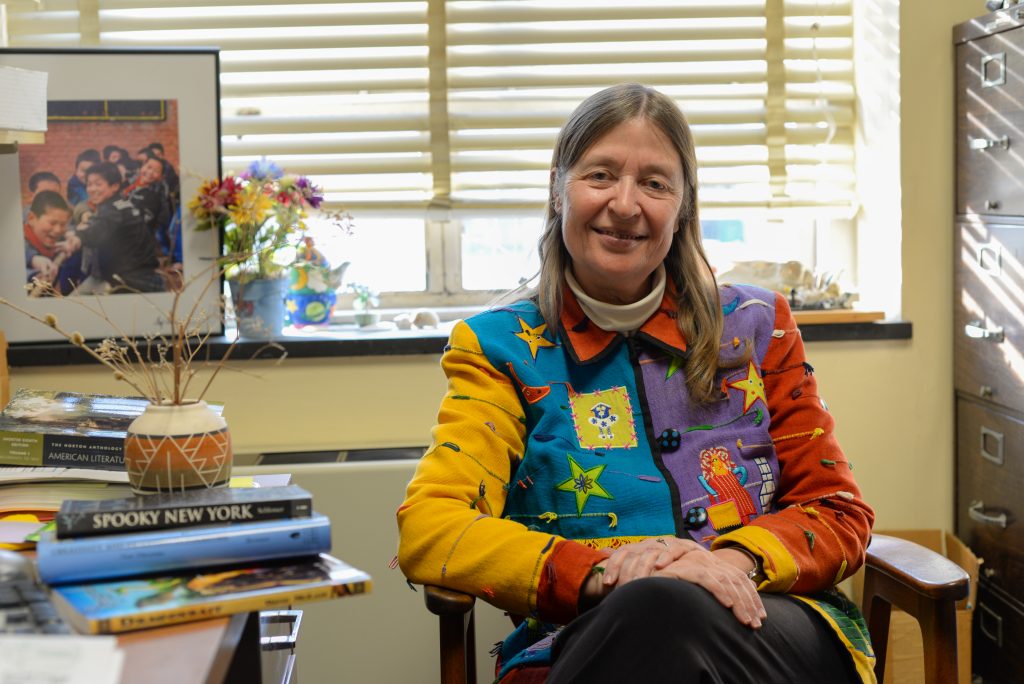
Most people have probably heard of the Headless Horseman, the Amityville Horror House and countless asylums across the country that are reportedly haunted. Maybe you’ve even heard of Lily, the ghost of a Native American or settler child that supposedly haunts Cleveland Hall in Hinman Community. These legends and ghost stories are examples of strong oral traditions that persist to this day and manifest themselves on the Binghamton University campus. On Saturday, Feb. 9, the Broome County Arts Council opened its gallery doors for a lecture on such legends by Dr. Elizabeth Tucker, a professor of English at BU.
The audience was welcomed with bagels, coffee and an intimate environment in a small room with a dozen chairs in front of a podium. At the showcase, Tucker presented her book, “Legend Tripping: A Contemporary Legend Casebook.” Tucker stated that legends are a facet of oral tradition, discussing the origins of legends from ancient oral traditions and epic poems such as “The Epic of Gilgamesh.” Many of these involve heroes embarking on quests to dangerous places trying to achieve something seemingly impossible and risking their lives on the way.
“Legends are stories told conversationally and told as true,” Tucker said. “They are about things that sound wondrous and amazing. [They are] sometimes frightening and unsettling, and we wonder if they could actually be real. Often the telling of legends stimulates a trip to a place where you will try to test how true that legend is.”
Such pilgrimages are referred to as “legend trips” by Tucker. In her discussion of legend tripping, Tucker discussed some allegedly haunted locations in the Southern Tier with the audience. The audience shared their own experiences with the supernatural and various explanations for them, providing for a lively and thought-provoking discussion.
As for BU’s campus, according to Tucker, Hughes Hall in Hinman is supposedly haunted by the ghost of Charlene, a domestic ghost who likes to bake brownies. Smith Hall has had reports of furniture being thrown around and a strange smell of perfume. There’s even a whole underground system of lakes and tunnels that most students never catch a glimpse of. Tucker spoke of numerous stories of strange phenomena in the Nature Preserve; she has had three students tell her of encountering a tall, shadowy figure during nighttime hikes.
Among the many topics of conversation, one of them was the transformation of ghost stories across generations. For example, the legend of Slenderman, although a famous one, is a recent development that spread with the help of the internet. Tucker also explained how the digital era has influenced and transformed the human tradition of telling legends, legend tripping and our connection to the spirit world. Social media apps such as Ghost Radar Classic make detecting spirits and legend tripping more accessible.
According to Tucker, legend trips are often initiatory. They are ways for people, especially teenagers and college students, to test their courage. However, Tucker stressed that legend tripping can be a meaningful experience for everyone.
“Not only is it fun, but it’s something deeper than fun,” Tucker said. “It makes you consider the boundary between life and death and offers you a chance to re-enchant the world.”


